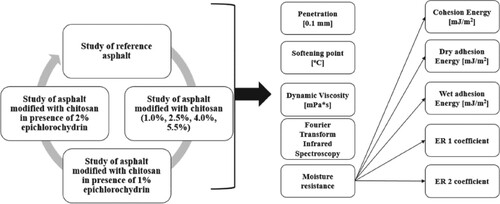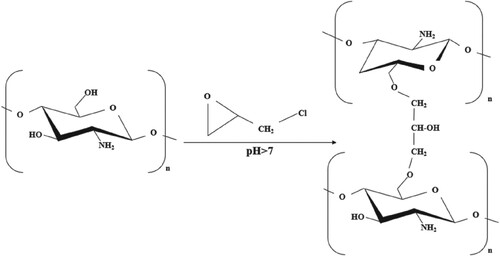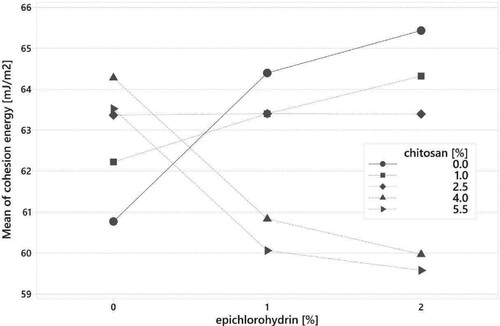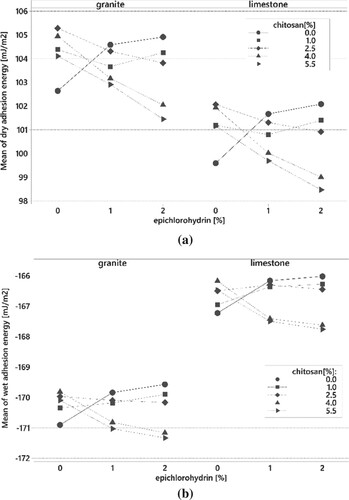Figures & data
Table 1. Labelling of samples studied in the work.
Figure 3. Effect of chitosan and epichlorohydrin content [%] on the penetration of modified bitumen.
![Figure 3. Effect of chitosan and epichlorohydrin content [%] on the penetration of modified bitumen.](/cms/asset/e3f70ef3-fd0f-4a82-903b-ac72bd1e5733/trmp_a_2174357_f0003_ob.jpg)
Figure 5. Effect of chitosan and epichlorohydrin content [%] on softening point of the modified bitumen.
![Figure 5. Effect of chitosan and epichlorohydrin content [%] on softening point of the modified bitumen.](/cms/asset/47227d83-3c10-472d-ab1f-317f058f3016/trmp_a_2174357_f0005_ob.jpg)
Figure 6. Effect of chitosan and epichlorohydrin addition on penetration index of the modified bitumen.
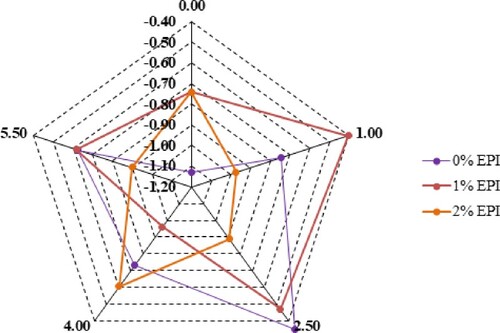
Figure 7. Effect of chitosan and epichlorohydrin addition on dynamic viscosity of the modified bitumen binder at 135°C.
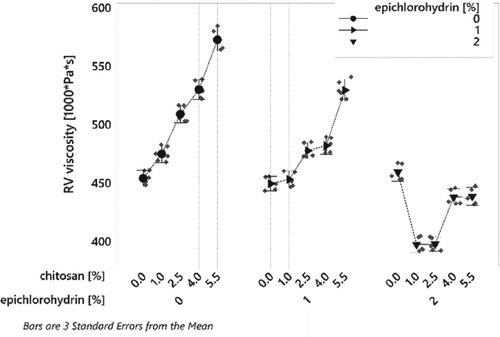
Figure 8. FTIR spectra of bitumen modified with different chitosan contents with the use of 0% (a), 1%(b) and 2%(c) of epichlorohydrin.

Table 2. Analysis of variance for cohesion energy.
Table 3. Analysis of variance for dry and wet adhesion energy.
Table 4. Analysis of variance for ER1 and ER2.


